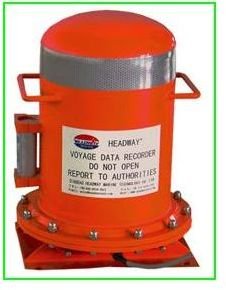Know about the Black Box in ships
Introduction
We all know about the “Black Box” which is used in aircraft. It is a very important component in an aircraft as it tells the tale of what happened inside the aircraft which lead to any machinery failure or any communication system failure, which ultimately led to the crash. Similarly ships also have a “Black Box” installed in them. It is called as “VDR” or the “Voyage Data Recorder.” It is also called as MBB, “Maritime Black Box. In this article, let us discuss about the regulations, functions and uses of VDR’s.
What is a VDR?
VDR is the acronym for Voyage Data Recorder.
As per the IMO’s International convention, SOLAS requirement is that every ship must have a VDR located in suitable enclosure, capable of data storage and retrieval when ever required. A VDR is an electronic equipment stored in a suitable enclosure which can be either externally located protective storage unit or may be in a retrievable fixed unit or may be of free floating type and sometimes combined with the EPIRB. Various data involving numerous equipments onboard ship is connected to the VDR with the help of sensors. The VDR collects all these data and stores them in the protective storage unit, after converting its format and reducing its actual size by compressing. This protective storage unit is usually tamperproof specially designed to withstand marine atmospheres of heavy sea, storm, fire, collision, explosion, shock, and it will be safe even if the ship sinks.
One might question about the memory capacity of VDR. It is very essential to note that it has the capability to store data which was collected in the last 12 hours considering any given point of time. The stored data can be easily transferred to a normal PC (personal computer) or even a Laptop and viewed for further investigations. Ship owners and other authorized authorities can retrieve, recover and replay the stored data sometimes for even monitoring performances or efficiency, weather conditions and damage investigations, collision avoidance and for training purpose too. These data may be used for imparting training with the motive of improving the safety standards and some may use with permission for research programs too. Latest systems may even record bridge happenings and voices for investigation if some mishap happens due to communication barriers.
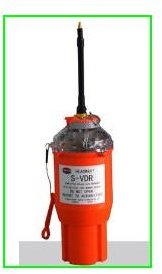
Data stored in VDR
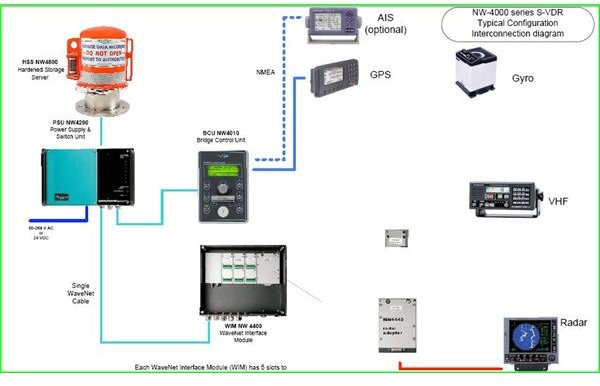
A VDR stores wide variety of data, everything necessary for an investigation of any situation which hinders the safety of the ship or crew or the environment. The data stored are as follows:
1. Position of the vessel, Date and Time. Usually reference taken from UTC ( Universal Time co-ordinate or coordinated universal time), usually from GPS.
2. Speed on water and speed over ground.
3. Audio recorded over VHF radio communications
4. Course of the vessel from Gyro compass.
5. Data from radar or Automatic Identification System (AIS)
- Depth under Keel, taken from echo sounder.
7. Bridge audio for common internal communications capable of recording even in bridge wings.
8. All important IMO mandatory alarms.
9. Any weather tight and water tight hull opening status.
10. Fire door status.
11. Engine order and rudder order with response,
12. Wind speed and wind direction,
13. Hull stresses and corresponding Load/buoyancy curve,
14. Propeller and Thruster direction and RPM. Etc.
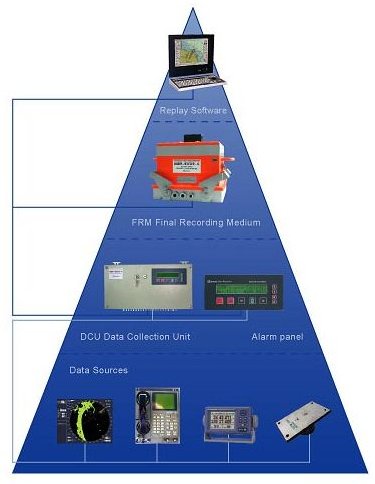
SVDR and VDR
There is no Principal difference between the VDR and SVDR. VDR—Voyage Data Recorder and S-VDR is Simplified Voyage Data Recorder. The only difference between these two is the amount of data that can be recorded in each. A VDR must comply with more regulations than S-VDR and it must be capable of storing more data when compared to S-VDR.
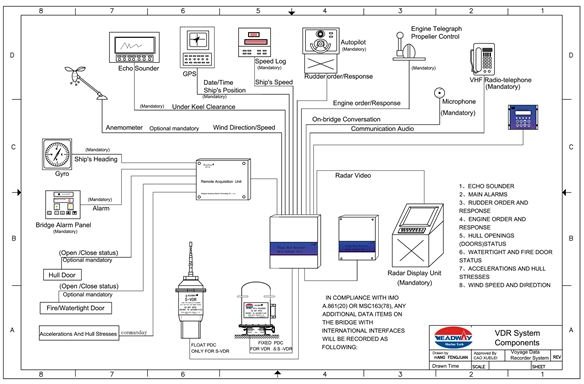
The regulations governing the VDR’s can be referred to chapter V on Safety of Navigation of the International Convention for the Safety of Life at Sea, 1974. (SOLAS).
Regulations pertaining to the VDR requirements can be referred at regulation 20 of SOLAS chapter V.
